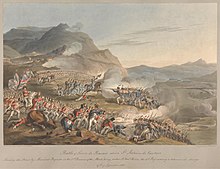
At the Battle of Fuentes de Oñoro, the Anglo-Portuguese Army under Wellington checked an attempt by the French Army of Portugal under Marshal André Masséna to relieve the besieged city of Almeida.

General Julien Augustin Joseph Mermet fought in the Napoleonic Wars as a division commander in Italy and in the Peninsular War.

The Combat of the Côa was a military engagement that occurred during the Peninsular War period of the Napoleonic Wars. It took place in the valley of the Côa River and it was the first significant battle for the new army of 65,000 men controlled by Marshal André Masséna, as the French prepared for their third invasion of Portugal.
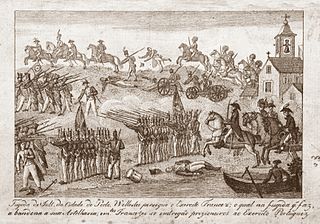
The Second Battle of Porto, also known as the Battle of the Douro or the Crossing of the Douro, took place on 12 May 1809. General Arthur Wellesley's Anglo-Portuguese Army defeated Marshal Soult's French troops and took back the city of Porto. After taking command of the British troops in Portugal on 22 April, Wellesley immediately advanced on Porto and made a surprise crossing of the Douro River, approaching Porto where its defences were weak. Soult's late attempts to muster a defence were in vain. The French quickly abandoned the city in a disorderly retreat.

Sharpe's Escape is the twenty-third historical novel in the Richard Sharpe series by Bernard Cornwell, published in 2004. Sharpe is embroiled in the British retreat through Portugal in 1810 from the defence of the ridge at Bussaco to the Lines of Torres Vedras, where the French offensive is successfully halted.
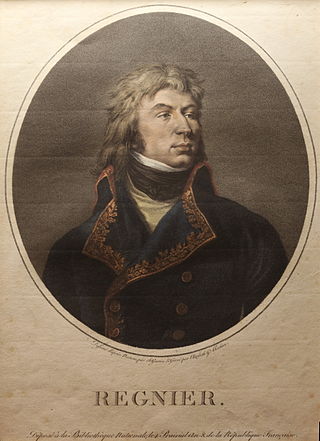
Jean Louis Ebénézer Reynier was a Swiss-French military officer who served in the French Army under the First Republic and the First Empire. He rose in rank to become a general during the French Revolutionary Wars and led a division under Napoleon Bonaparte in the French campaign in Egypt and Syria. During the Napoleonic Wars, he continued to hold important combat commands, eventually leading an army corps during the Peninsular War in 1810–1811 and during the War of the Sixth Coalition in 1812–1813.

The Battle of Sabugal was an engagement of the Peninsular War which took place on 3 April 1811 between Anglo-Portuguese forces under Arthur Wellesley and French troops under the command of Marshal André Masséna. It was the last of many skirmishes between Masséna's retreating French forces and those of the Anglo-Portuguese under Wellington, who were pursuing him after the failed 1810 French invasion of Portugal.

Louis Henri Loison briefly joined the French Army in 1787 and after the French Revolution became a junior officer. Blessed with military talent and courage, he rapidly rose to general officer rank during the French Revolutionary Wars. He got into difficulties because of his fondness for plundering. In late 1795 he helped Napoleon Bonaparte crush a revolt against the government. After a hiatus, he returned in 1799 to fight in Switzerland where he earned another promotion. In 1800 he commanded a division under Napoleon in the Marengo campaign.

Jean Gabriel Marchand, 1st Count Marchand went from being an attorney to a company commander in the army of the First French Republic in 1791. He fought almost exclusively in Italy throughout the French Revolutionary Wars and served on the staffs of a number of generals. He participated in Napoleon Bonaparte's celebrated 1796-1797 Italian campaign. In 1799, he was with army commander Barthélemy Catherine Joubert when that general was killed at Novi. Promoted to general officer soon after, he transferred to the Rhine theater in 1800.
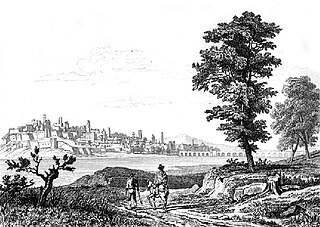
The Battle of the Gebora took place during the Peninsular War between Spanish and French armies on 19 February 1811, northwest of Badajoz, Spain. An outnumbered French force routed and nearly destroyed the Spanish Army of Extremadura.

In the siege of Ciudad Rodrigo, in Salamanca, Spain, the French Marshal Michel Ney took the fortified city from Field Marshal Andrés Pérez de Herrasti on 10 July 1810 after a siege that began on 26 April. Ney's VI Corps made up part of a 65,000-strong army commanded by André Masséna, who was bent on a third French invasion of Portugal.

In the Blockade of Almeida a French garrison under Antoine François Brenier de Montmorand was surrounded by approximately 13,000 Anglo-Allied soldiers led by Generals Sir Alexander Campbell, 1st Baronet and Sir William Erskine, 2nd Baronet.
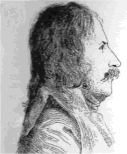
Louis Tirlet was a French général de division and artillery specialist during the Napoleonic Wars. His name appears in the 21st column of the Arc de Triomphe.

The Battle of Redinha was a rearguard action which took place on March 12, 1811, during Masséna's retreat from Portugal, by a French division under Marshal Ney against a considerably larger Anglo-Portuguese force under Wellington. Challenging the Allies with only one or two divisions, Ney's 7,000 troops were pitched against 25,000 men. In a typical rearguard action, Ney delayed the Allied advance for a day and bought valuable time for the withdrawal of the main body of the French army.

The Battle of Pombal was a sharp but ultimately indecisive skirmish fought at the eponymous town during Marshal Masséna's retreat from the Lines of Torres Vedras, the first in a series of lauded rearguard actions fought by Michel Ney. The French were pursued by Wellington and his British-Portuguese army but the Allied advance was energetically contested by Ney's efforts, preventing Wellington from crushing Masséna's army when it was critically vulnerable.

The Battle of Casal Novo was a rear-guard action fought on March 14, 1811, during Massena's retreat from Portugal. During this retreat a French division, under command of Michel Ney, conducted a series of sharp rear-guard actions. At Casal Novo, the recklessness of Sir William Erskine resulted in costly losses in the Light Division.

Pierre-Louis Binet de Marcognet joined the French army in 1781 as an officer cadet and fought in the American Revolutionary War. During the French Revolutionary Wars he fought in the Army of the Rhine and was wounded at First and Second Wissembourg. After being dismissed from the army for a year and a half for having noble blood, he resumed his military career and was wounded at Biberach and Kehl. Promoted to lead the 108th Line Infantry Demi-Brigade, he was in the thick of the fighting at Hohenlinden in 1800, where he was wounded and captured.

François Nicolas Mathus Fririon joined the French army and rose through the ranks during the French Revolutionary Wars to become a general officer by 1800. After commanding a brigade with distinction during the War of the Fifth Coalition at Aspern-Essling and Wagram he was promoted and made chief of staff to Marshal André Masséna. He served in this role during Masséna's 1810–1811 invasion of Portugal. His history of that campaign was published posthumously by his son. His surname is one of the names inscribed under the Arc de Triomphe, on Column 16.

Étienne Heudelet de Bierre joined the French army as a volunteer lieutenant in 1792. A year later he became a staff officer for a number of generals before becoming Laurent Gouvion Saint-Cyr's chief of staff in 1795. He fought under Jean Victor Marie Moreau in the 1796 campaign and fought at Kehl. He became a general officer in 1799, leading his troops at the First and Second battles of Zurich. In April 1800 he was a brigade commander in Jean Victor Tharreau's division in Moreau's army. In December of that year he fought at Hohenlinden under Michel Ney.

The fortress of Real Fuerte de la Concepción is a star fortress built in the Vaubanesque style. It is located 0.6 miles (0.97 km) west of the village of Aldea del Obispo in the province of Salamanca, western Spain, part of the autonomous community of Castile and León. The fortress was constructed there because of its position of great strategic significance due to its proximity to the border between Spain and Portugal which lies 0.4 miles (0.64 km) to the west of the fortress. The Fortress of the Concepcion is also opposite the Portuguese castle fortress of Almeida which lies 5.5 miles (8.9 km) west-north-west of the fortress. In 2006, the derelict fortress was sold privately and the site was renovated into a luxury hotel which opened in 2012.
